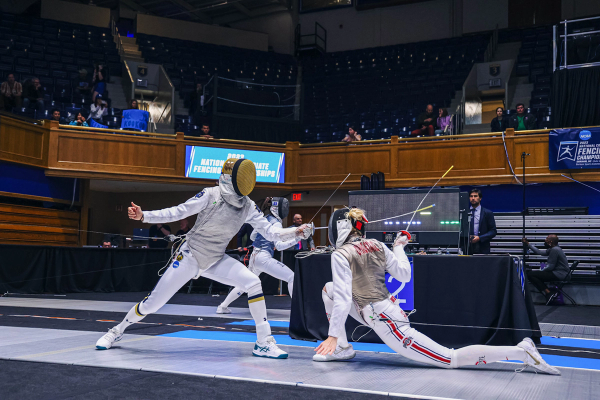What to know about NCAA fencing

The GIST: What do Olympic enthusiasts and fans of The Princess Bride have in common? They know fencing’s one of the most interesting sports out there. The NCAA sponsors 34 coed and nine women’s programs across the three divisions, all competing for the same national championship. But because life is pain, the rules are complicated AF…
- Men and women don’t compete against each other, but as one of the NCAA’s three coed sports (along with skiing and rifle), all individual points contribute to a single team total, and the team with the most points wins the tournament.
How it works: Fencing involves different weapons — the foil, épée, and sabre — each with different scoring. In sabre, a few specific parts of the blade’s surface can score, but in foil and épée, an athlete must toosh touch their opponent with the tip. The scoring area (where a fencer must strike an opponent’s body to score) varies for each weapon, too.
- The field of play, called the piste, is very limited. If athletes step out of bounds, their opponents steal a point. And in a sport of such precision, electronic sensors are used to determine both out-of-bounds calls and contact with an opponent’s scoring area.
- Each competition, fencers face multiple foes in one-on-one bouts, which they win by earning 15 touches, or points, first. But the fencer who wins the day isn’t always the one who took the most bouts — it’s who accumulates the most points across all their bouts.
The powerhouses: Although intercollegiate men’s fencing has existed for much longer, the NCAA sanctioned the coed sport in 1990. Since then, only seven schools have won the natty, led by Penn State with 13. But today’s most dominant program is Notre Dame — the reigning three-peat champion Irish have nine titles, with five in the last six seasons. No wishing required.
Enjoying this article? Want more?

Sign up for The GIST and receive the latest sports news straight to your inbox three times a week.